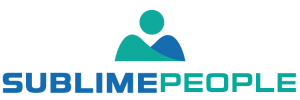The pharmaceutical industry is under pressure. With the rise of generic drugs and their lower prices, big pharma is struggling to maintain its profit margins. In addition, drug development costs are skyrocketing, making it increasingly difficult to bring new treatments to the market. What does the future hold for the pharmaceutical industry? Can it continue to thrive in the face of these challenges?
In this Article:
What is a Pharmaceutical?
A pharmaceutical is a chemical compound or mixture that is used in the diagnosis, cure, treatment, or prevention of disease. Pharmaceuticals are typically manufactured by pharmaceutical companies and are prescribed by physicians or other healthcare professionals.
The term “pharmaceutical” can also refer to the actual medicine or drug that is used to treat a medical condition. For example, the “pharmaceutical industry” refers to the companies that manufacture and sell pharmaceuticals.
What is meant by pharmaceutical industry?
The pharmaceutical industry is a business sector that is focused on the discovery, development, and marketing of drugs and pharmaceuticals. This industry is vitally important to public health, as it produces the medications that people rely on to treat and prevent illnesses. The pharmaceutical industry is also a major source of revenue for many countries, and it employs hundreds of thousands of people around the world.
What is an example of pharmaceutical industry?
One of the largest pharmaceutical manufacturing companies in the world is Pfizer, which is based in the United States. This company produces a wide range of drugs and pharmaceuticals, including many that are essential to the treatment of serious illnesses. Other examples of pharmaceutical companies include GlaxoSmithKline, Novartis, and Merck. These firms are all major players in the global pharmaceutical industry.
What makes up the pharmaceutical industry?
The pharmaceutical industry is made up of several businesses, including drug manufacturers, drug wholesalers, and pharmacies. Drug manufacturers are responsible for developing and producing new medications, while drug wholesalers distribute these drugs to pharmacies and other customers. Pharmacies dispense drugs to patients and provide other services, such as advice on how to use medications correctly.
What are the big 4 pharmaceutical companies?
Some of the large pharmaceutical companies are Johnson & Johnson, Pfizer, Abbott Laboratories, and Merck & Co.
- Johnson & Johnson: Johnson & Johnson is an American multinational corporation that manufactures medical devices, pharmaceuticals, and consumer goods. They found the company in 1886 and have since grown to become one of the largest healthcare companies in the world, with over 130,000 employees worldwide.
- Pfizer: Pfizer is an American multinational pharmaceutical corporation that was founded in 1849. The company is one of the largest pharmaceutical companies in the world, with over 80,000 employees worldwide. Pfizer’s products include a wide range of prescription and over-the-counter drugs, as well as consumer health products.
- Roche: Roche is a Swiss multinational healthcare company that was founded in 1896. The company is one of the largest pharmaceutical companies in the world, with over 91,000 employees worldwide. Roche’s products include a wide range of prescription and over-the-counter drugs, as well as diagnostics and consumer health products.
- Sanofi: Sanofi is a French multinational pharmaceutical company that was founded in 1973. The company is one of the largest pharmaceutical companies in the world, with over 110,000 employees worldwide. Sanofi’s products include a wide range of prescription and over-the-counter drugs, as well as vaccines and consumer health products.
Process in drug development
After they have identified a potential new drug, it must undergo a rigorous testing process to ensure that it is safe and effective. This testing process typically takes place in the following processes.
Medical research
The first step in new drug development is medical research. Medical researchers study the effects of different drugs and identify potential new treatments. This research in the developing industry can take place in a variety of settings, including universities, hospitals and pharmaceutical companies.
Preclinical research
After they have identified a potential new treatment, it must undergo preclinical testing. In preclinical research, they test the new treatment in laboratory animals to assess its safety and effectiveness. If they find the new treatment to be safe and effective in clinical research, it will move on to clinical trials.
Clinical trials
After they have found a new treatment to be safe and effective in preclinical testing in pharmaceutical development, it must undergo clinical trials. They conduct clinical trials on drug candidates to assess the safety and effectiveness of a new treatment. If they find the new treatment to be safe and effective in clinical trials, the relevant regulatory authority will approve it for use.
Approval and marketing
The fourth phase of new drug development is approval and marketing. After they have found a new treatment to be safe and effective in clinical trials, responsible bodies must approve it for use by the relevant regulatory bodies. Once a new treatment has been approved, it can be marketed and sold to patients.
The FDA approval process
The FDA approval process can be divided into two parts: pre-market approval (PMA) and new drug application (NDA).
Pre-market approval (PMA)
The PMA process is reserved for new treatments that should treat life-threatening or severely debilitating diseases. To get PMA approval, a pharmaceutical company must submit extensive data about the new treatment, including data from clinical trials. The FDA review process for PMA applications is highly rigorous, and approval is not guaranteed.
New drug application (NDA)
The NDA process is less intensive than the PMA process and is used for new treatments that should treat new drugs that are less serious diseases. In order to obtain NDA approval, a pharmaceutical company must submit data about the new treatment, including data from clinical trials. The FDA review process for NDA applications is less rigorous than the process for PMA applications, and approval is more likely.
Examples of pharmaceutical products
Regenerative medicine
Regenerative medicine is a type of treatment that involves using cells or tissue to repair or replace damaged tissue. Regenerative medicine holds the promise of treating a wide variety of diseases, including heart disease, diabetes, and arthritis.
Gene therapy
Gene therapy is a type of treatment that involves correcting a genetic defect by delivering a healthy copy of the gene to the cells. Gene therapy holds the promise of treating a wide variety of diseases, including cancer, cystic fibrosis, and hemophilia.
Monoclonal antibodies
Monoclonal antibodies are proteins that are produced in the laboratory and are designed to bind to specific targets, such as viruses or cancer cells. Monoclonal antibodies are used to treat a variety of diseases, including cancer, Crohn’s disease, and rheumatoid arthritis.
Small molecule drugs
Small molecule drugs are chemicals that bound to specific targets, such as enzymes or receptors. Small molecule drugs are used to treat a variety of diseases, including cancer, heart disease, and diabetes.
Biologics
Biologics are products that are derived from living organisms, such as bacteria or yeast. Biologics are used to treat a variety of diseases, including cancer, Crohn’s disease, and rheumatoid arthritis.
Vaccines
Vaccines are products that are used to prevent or treat infectious diseases. They make vaccines from viruses or bacteria. Vaccines are used to prevent a variety of diseases, including influenza, polio, and measles.
Types of pharmaceutical industries
There are different pharmaceutical industries, each with its own strengths and weaknesses. Some focus on developing new drugs, while others specialize in manufacturing or marketing.
Research-based pharmaceutical companies
Research-based pharmaceutical companies are companies that focus on the discovery and development of new treatments. These companies invest heavily in research and development (R&D) and typically have large portfolios of patents. Research-based pharmaceutical companies are often vertically integrated, meaning that they are involved in all stages of the drug development process, from research to marketing.
Biopharmaceutical
A biopharmaceutical company, also known as a biotechnology company, is a pharmaceutical company that focuses on the development of drugs and therapies based on living cells and biological processes. Biotechnology companies are at the forefront of cutting-edge science and are often responsible for developing groundbreaking new treatments for serious diseases.
Generic
A generic pharmaceutical company is a company that manufactures and sells generic drugs. Generic drugs are identical to brand-name drugs in terms of the active ingredient, dosage, strength, route of administration, and safety, but they are typically much cheaper. These larger pharmaceutical companies play an important role in making medications more affordable for patients.
Specialty
A specialty pharmaceutical company is a company that focuses on the development and commercialization of drugs for niche markets. Specialty pharmaceutical companies often develop drugs for rare diseases or conditions that require specialized care. These companies typically have a deep understanding of the needs of their patients and work closely with healthcare providers to ensure that their products meet the highest standards of quality and safety.
Over-the-counter (OTC)
An over-the-counter (OTC) pharmaceutical company is a company that manufactures and sells medications that can be purchased without a prescription from a healthcare provider. OTC medications are typically used to treat common ailments, such as colds, headaches, and stomachaches. OTC pharmaceutical companies play an important role in providing consumers with safe and effective medications for self-care.
Challenges faced by the pharmaceutical companies
The pharmaceutical industry faces several challenges, including the increasing cost of research and development, the need for regulatory approval, and the threat of competition from generic drugs. In addition, the industry is facing increased scrutiny from government regulators and payers, who are demanding greater transparency and accountability.
Government regulations
The government highly regulates the pharmaceutical industry. Pharmaceutical companies must adhere to strict regulations regarding the research, development, and marketing of their products. These regulations can often be costly and time-consuming, which can hamper drug production.
Increasing costs of research and development
One challenge faced by pharmaceutical companies is the increasing costs of research and development. The costs associated with research and development, as well as marketing and advertising, are constantly increasing. This increase in costs can often price pharmaceutical companies out of the market for certain products. In addition, the cost of raw materials and other inputs used in the production of pharmaceuticals has been on the rise in recent years.
Patent expiration
Many pharmaceutical businesses rely heavily on blockbuster drugs, which generate a large amount of revenue for the company. However, these drugs often lose their patent protection after a few years. This allows generic manufacturers to produce and sell cheaper versions of the drug. This loss of revenue can devastate for a pharmaceutical company, as it can often lead to layoffs and other cost-cutting measures.
Competition from generic manufacturers
As mentioned above, generic manufacturers are a major threat to the profitability of pharmaceutical companies. Generic drugs are often much cheaper than brand-name drugs, which makes them appealing to patients and healthcare providers alike. In addition, many insurance companies now require patients to use generic drugs to save money.
Negative public perception
The public has often criticized the pharma industry for its high prices and perceived greed. This negative public perception can make it difficult for pharmaceutical companies to sell their products, as patients may be reluctant to use them if they believe they are overpriced or unnecessary. In addition, negative publicity can lead to increased regulation from the government.
Environmental impact of Pharmaceutical companies
The pharma industry has a significant impact on the environment. Manufacturing pharmaceuticals requires the use of toxic chemicals and other hazardous materials, which can often be released into the environment. In addition, the disposal of unused or expired drugs can also pollute the environment.
Using traditional remedies
We often see traditional remedies as a cheaper and more natural alternative to pharmaceuticals. This perceived benefit can make it difficult for pharmaceutical companies to sell their products, as patients may be more likely to use traditional remedies instead. In addition, the use of traditional remedies is more environmentally friendly than the use of pharmaceuticals.
The drug discovery process is very risky
While researchers are fully aware of the risks associated with developing new drugs, they may be blind to other dangers brought on by nonprofits and similar organizations.
New trends in pharmaceutical sector
The pharmaceutical industry is currently in a state of flux. Drug development is becoming increasingly expensive, and getting new drugs to market is becoming longer and more difficult. To stay competitive, the pharmaceutical industry must find new ways to speed up the drug development process and bring new drugs to market more quickly.
There are several potential ways to achieve good manufacturing practices.
Targeted therapies
The pharmaceutical industry should focus on developing more targeted therapies like Gene therapy that is specific to individual patients’ needs. By doing so, the industry can reduce the time and money spent on drug development and bring new therapies to market more quickly.
Biosimilars
Biosimilars are generic versions of biological drugs, which are drugs that are produced using living organisms. Biosimilars have been available in Europe for several years, but they are only now gaining approval in the United States. Biosimilars are often much cheaper than their brand-name counterparts, which makes them appealing to patients and healthcare providers alike.
Precision medicine
Precision medicine is a new approach to treating disease that considers a patient’s genetic makeup. Precision medicine is still in its early stages, but it has the potential to revolutionize the way we treat diseases like cancer.
3D printing
3D printing is a new technology that is being used to create custom-made drugs and other medical products. 3D printing allows pharmaceutical companies to create customized products that are specifically tailored to the needs of individual patients. This type of customization is not possible with traditional manufacturing methods.
Supercritical fluid technologies
Supercritical fluid technologies are a new way of manufacturing drugs that are much more efficient than traditional methods. Supercritical fluid technologies use supercritical fluids, which are liquids that have been compressed to such high blood pressure that they become gases. This technology is often used to create highly pure and potent drugs.
Nanomedicine
Nanomedicine is the use of nanotechnology to create drugs and other medical products. Nanomedicine has the potential to revolutionize the way we treat diseases, as it allows for the creation of highly targeted and effective drugs.
Medical devices
Medical devices are becoming increasingly popular to treat various medical conditions. Devices like pacemakers and artificial hips are now commonplace, and new devices are being developed all the time. Pharmaceutical companies are developing drugs that can be delivered directly to the site of an injury or illness using medical devices.
Vaccine development
Vaccines are one of the most important tools we have for preventing diseases. However, developing new vaccines is a long and expensive process. Pharmaceutical companies are working on new ways to speed up the vaccine development process so that we can more quickly and effectively respond to emerging diseases.
Target Validation of G Protein-Coupled Receptors
G protein-coupled receptors (GPCRs) are a class of proteins that are involved in a variety of cell signaling processes. GPCRs are an important target for drug development, as they are involved in many diseases. However, validating GPCRs as drug targets is a difficult and time-consuming process. Pharm companies are working on new ways to validate GPCRs so that they can more quickly and effectively develop drugs for diseases that involve these proteins.
In silico drug design
In silico drug design is a computer-based approach to drug development. In silico drug design uses computer modeling and simulations to identify potential drug targets and to screen for drugs that are likely to be effective against those targets. This approach is much faster and more efficient than traditional drug development methods, and it has the potential to reduce the time and cost of developing new drugs.
Conclusion
The pharmaceutical industry is changing rapidly, and it is poised for great things in the future. Thanks to new technologies and an increased understanding of how the human body works, we can expect more life-saving drugs to be developed in the years to come.


